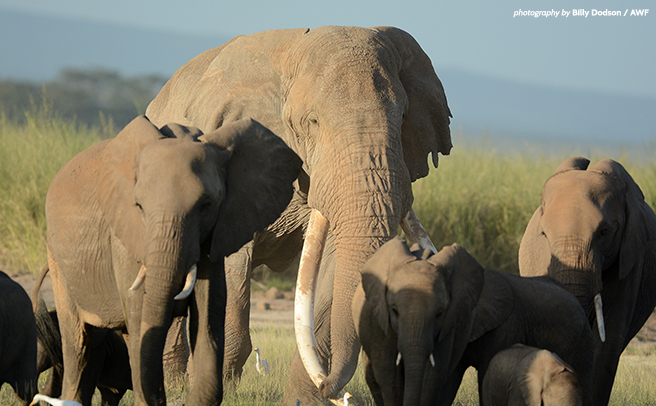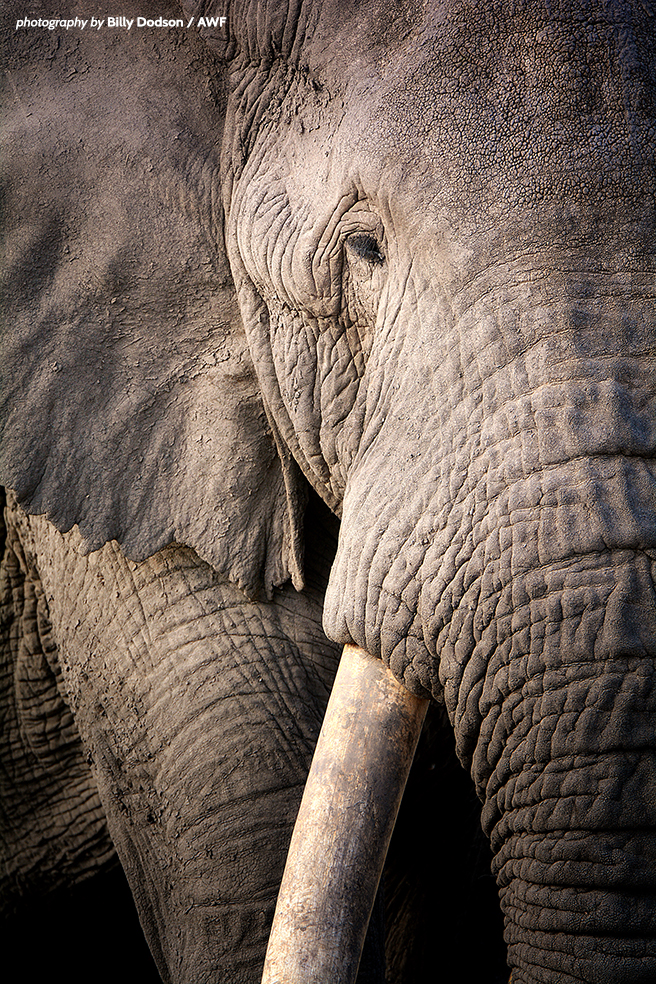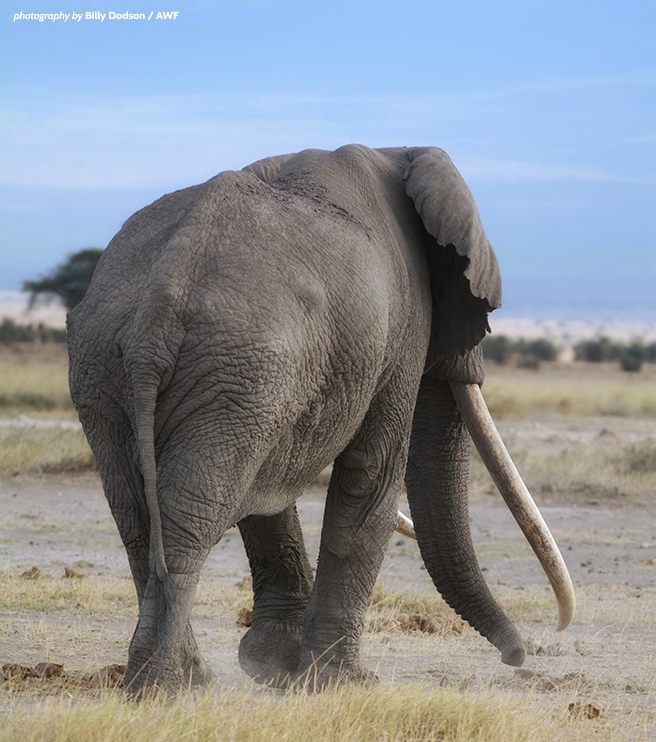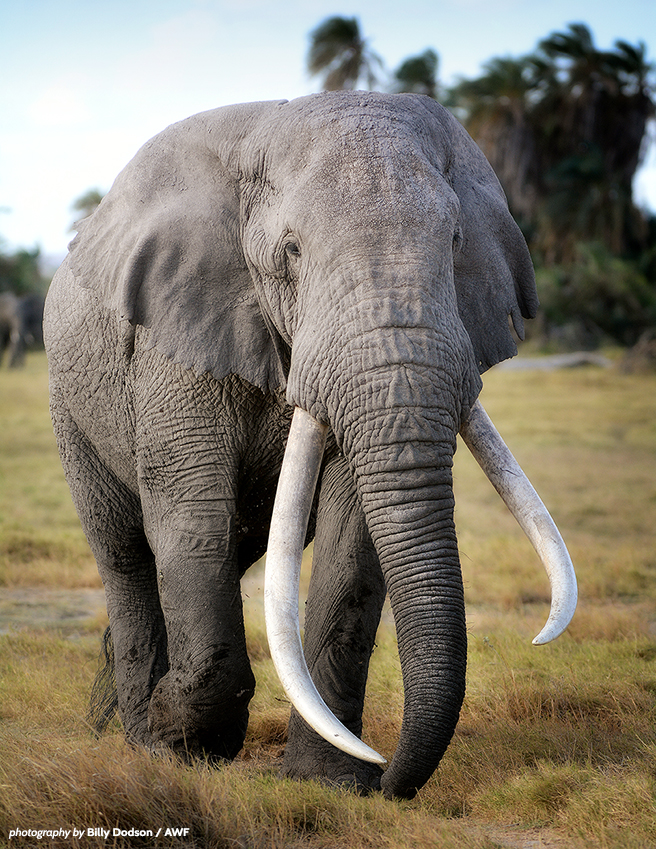Big Tim and the State of His Species

The world’s appetite for ivory has, for years now, been the driving force behind the catastrophic decline in Africa’s elephant population. A recently completed census revealed that Africa’s elephant numbers have declined by a full 30 percent over a period of just seven years.
Meanwhile, conflict with expanding human settlements poses another problem for this iconic species. When communities abut elephant habitat, elephants begin to feed on the crops grown by local farmers, often destroying a family’s source of income in a matter of hours. As a result, communities try to defend their livelihood by any means necessary, including attacks on encroaching elephants.
A couple of months back, there was another elephant story in the news that reflected the plight of the species in microcosm. Big Tim, the great patriarch of Amboseli National Park, was struck on the head with a large rock and pierced through the ear with a spear, the tip of which was embedded in his shoulder. Tim worked his way to the headquarters of the Big Life Foundation, a non-profit outfit and AWF partner dedicated to the conservation of elephants in southern Kenya. It seemed as if he had sought out humans who could assist him. He was sedated, treated and on his way back to the Amboseli marsh in fairly short order.

Big Tim is the patriarch of Amboseli National Park, and has been aptly described as "one cool cat."
Big Tim happens to be my favorite elephant in the world. I’ve been fortunate to spend many hours in his company over the years. He is huge. He is majestic. He is approaching 50 years of age and his prodigious right tusk almost scrapes the ground with every step.
It’s well documented that elephant families are matriarchal and males are expelled from the group when they reach sexual maturity. But Tim is always welcome to travel in company with the ladies and their families. He is unassuming, unpretentious and laid back.
A scientist friend of mine recently described Tim as “one cool cat.” Based on personal observation, I’d say that description is impeccable. The only time I’ve seen him even remotely perturbed was for the purpose of disciplining a younger bull that was stirring up a bit of a ruckus. He is the benevolent, slow-moving preserver of the peace at Amboseli. He is known and loved throughout Kenya. His portrait even adorns an entire wall in the baggage collection area at Jomo Kenyatta International Airport in Nairobi.

A lump on Tim's rear right hip is a lingering reminder of an attack with a poisoned spear.
Prior to this past February, I’d seen Tim most recently in November of 2014. At that time, he was moving even more slowly than usual as he recovered from a poisoned spear wound high on his right side. After seeing news articles on the most recent attempt on his life, it occurred to me that the assaults and injuries he’s endured are in many ways emblematic of the challenges faced by the elephant species writ large. Some examples are obvious:
- There have been multiple attempts on Tim’s life. Like the rest of his kind, his existence is at risk at all times.
- The danger to Tim and all elephants is exclusively from Homo sapiens. No other species poses a threat to him.
- The risks are particularly egregious where traditional wildlife territories conflict with human settlements. This has been the cause of Tim’s two most serious wounds.
- Elephants are poached for their ivory, and Tim’s tusks are among the biggest in all of Africa. While he has already grappled with human–wildlife conflict, his tusks potentially make him one of the biggest targets for poachers as well.
But, while humans represent the primary threat to the existence of the species, they also represent the only hope for its salvation. It’s a matter of will and commitment. In light of the disturbing numbers published in the recent census and for the sake of Big Tim and all of Africa’s elephants, I sincerely hope we are up to this most difficult task.

Tim is approaching 50 years of age and his prodigious right tusk almost scrapes the ground with every step.
Earlier this month, Kenya Wildlife Service, with the support of Wildlife Direct, Save the Elephants, Big Life Foundation and the Amboseli Trust for Elephants, successfully attached a GPS tracking collar to Tim. The collar will be used to monitor his movements, allowing a security team to respond quickly if the bull seems headed toward agricultural areas and alerting them of potential trouble if he remains immobile for several hours. While Tim was initially sedated so that the collar could be attached, it has since been reported that he has rejoined his fellow elephants in the park and appears to be in good condition.